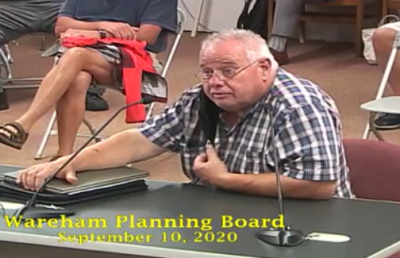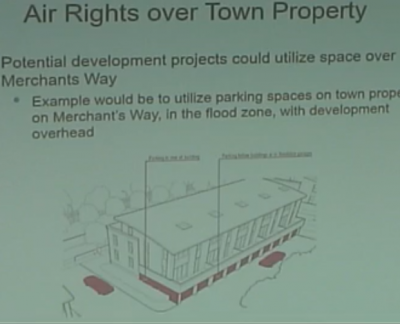Residents make voices heard on main street rezoning, marijuana testing
Asked about proposed zoning changes that will appear at an Oct. 26 Town Meeting, Wareham residents voiced conflicting opinions on a proposed rezoning of Main Street and a potential marijuana testing facility next to John W. Decas Elementary School.
The controversial proposal for Main Street would rezone part of the street as mixed-use, which would allow for commercial and residential uses in four or five story buildings to encourage more business in the area.
Also in consideration would be using the “air rights” over the parallel Merchant’s Way to develop parking at what is currently street level and construct buildings over that.
Wareham Selectman Jim Munise was concerned that the 60 foot height limit would allow six-story buildings. He also asked that if the Planning Board encourages a residential use for the area that it also encourage affordable housing.
One Planning Board member agreed with Munise on the height. Others compared that height to the approximate height of Rosebrook and thought a building of that size would be intimidating on Main Street.
Town Planner Ken Buckland suggested designers could construct buildings with “setbacks,” which would make them two stories tall closest to the street and add additional stories at the back of the building, so the height wouldn’t be as noticeable to pedestrians walking by them.
Planning Board member Richard Swenson thought “we need to be very careful with any restrictions we put on” Main Street, since adding restrictions might discourage businesses.
Another Wareham resident said he saw 65 feet as the bare minimum for capping the height and would be in favor of raising the cap to 100 feet.
He thought plans for a new middle school, new Onset Fire Department and plans for renovated train tracks behind Main Street had incredible potential to draw people to Wareham and did not want to see that potential limited.
Andy Costello and John Solich both thought that the zoning change would represent a considerable change from the current residential experience in Wareham. They thought the town should be working for its residents, rather than catering or “selling out,” to developers as Solich put it.
Costello was also very concerned about increased traffic on Main Street with the new businesses. The Planning Board said it had not done any studies on the matter because studies are usually done in conjunction with individual projects, and it has not received any.
A proposal to allow Smithers Labs to test up to eight teaspoons of marijuana products a day for metals or chemicals despite its proximity to the elementary school also brought to light a pair of opposing viewpoints.
One Wareham resident said the restrictions of the town’s current bylaw were “a little bit silly,” suggesting that now that the town has allowed marijuana facilities for a year or two “90% of it could be stricken,” with a thorough bylaw review.
Planning Board member Russell Motto thought that the board should keep the setback as applied to schools.
Because testing would take some time to set up, planners at Smithers estimate that the school and marijuana testing would only be operational at the same time for about five months before the school is closed in January 2022. Motto believed the board should grant Smithers a temporary license to operate while the school was still in session without altering its bylaw.
Three of the other articles that the Planning Board brought up for review on Sept.10, on drive throughs, multifamily housing and a sign law, elicited no response.
All zoning changes need to be approved by 2/3 of voters at the Oct. 26 Town Meeting to go into place. The location of Town Meeting is not yet set at this time.














